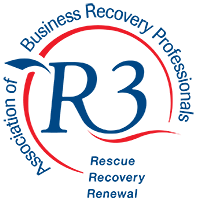The sudden liquidation of Clarkebond (UK) Ltd in December, just three months after its acquisition by Independent Design House Group (IDHG), has shocked many in the engineering sector. A firm with a proud 77-year legacy, its abrupt collapse raises important questions about the changing dynamics in the industry, particularly concerning mergers and acquisitions, management practices, and the impact of new ownership on established businesses.
In this blog, we explore how the Clarkebond liquidation highlights broader trends in the engineering and consultancy industry and what it means for companies navigating an increasingly complex business environment.
The acquisition and rapid decline
Clarkebond was once a leading engineering consultancy, trusted by clients for nearly eight decades. However, the acquisition by IDHG, a specialist in temporary works, marked a significant shift. IDHG’s leadership saw the acquisition as an opportunity to expand its footprint, increase its workforce, and diversify its services. They were optimistic about the synergies between the two firms, with plans to combine Clarkebond’s multi-disciplined consultancy capabilities with IDHG’s existing portfolio.
The deal brought 90 Clarkebond employees into IDHG, increasing the workforce to 140 across several locations, including London, Bristol, and Poland. The ambition was clear: triple turnover to over £10 million and create a powerful engineering consultancy offering everything from conceptual design to on-site construction services.
However, things quickly began to unravel. Despite the promising vision, reports from insiders suggest that the integration of Clarkebond into IDHG didn’t go as smoothly as expected. Management practices clashed, and the company’s established culture was disrupted by changes many employees found difficult to adapt to. Key staff members began to leave, and redundancies soon followed, severely affecting their ability to deliver on contracts. Ultimately, Clarkebond entered liquidation in mid-December, leaving staff and stakeholders stunned.
What went wrong?
The Clarkebond liquidation shows the challenges faced by businesses undergoing mergers and acquisitions in a fast-evolving industry. While acquisitions are often seen as a means to accelerate growth, they also come with inherent risks – especially when the integration process isn’t handled well.
Here are some key factors that contributed to the shifting landscape in which the Clarkebond liquidation occurred:
1. Cultural clashes and management styles
One of the most significant issues that seems to have led to Clarkebond’s downfall was the clash of corporate cultures. Clarkebond had operated for over seven decades with an established work culture that valued stability and trust. On the other hand, IDHG, a growing firm with its own set of management practices, may have underestimated the importance of this cultural fit when making decisions post-acquisition.
For many businesses, company culture plays a key role in employee satisfaction and retention. When the new management practices imposed by IDHG were perceived as misaligned with the existing culture, it led to the departure of talented staff. This highlights the importance of taking cultural compatibility into account during any acquisition process. Without the right cultural integration, even financially healthy companies can experience significant disruptions.
2. Impact of redundancies on business operations
The redundancies made by IDHG, despite assurances they wouldn’t impact performance, turned out to be a mistake. While reducing staff numbers might be seen as a way to cut costs and increase profitability, it often has unintended consequences. When redundancies disrupt key functions, they can severely affect a business’s ability to meet its contractual obligations and maintain customer satisfaction.
In Clarkebond’s case, the redundancies led to challenges in fulfilling projects, which further eroded client confidence. That is an important lesson for any company going through a merger or acquisition. The impact of layoffs on productivity and morale should be carefully considered, as it can quickly undo the positive aspects of growth and expansion.
3. The pressure of rapid growth
Clarkebond’s acquisition was designed to supercharge IDHG’s business, with ambitious plans to increase turnover and diversify its services. However, rapid growth can be a double-edged sword. Expanding too quickly without proper infrastructure or management support can overwhelm a business and lead to operational inefficiencies. The pressure to integrate two firms and meet ambitious targets within a short time frame can result in poor decision-making and, ultimately, jeopardise the company’s survival.
That is particularly relevant in the current business climate, where companies in the engineering sector face heightened competition, economic challenges, and increasing demand for innovative solutions. In this environment, businesses must be cautious about taking on too much too quickly, especially if they lack the necessary resources to manage the transition effectively.
The changing face of the engineering consultancy sector
The Clarkebond liquidation highlights the evolving nature of the engineering consultancy sector, shaped by factors like digital transformation, globalisation, and new working practices. These shifts are driving significant changes, including the trend towards larger, multi-disciplined firms and the growing role of technology in the industry.
- The shift towards larger, multi-disciplined firms: The engineering and consultancy industries have seen a trend towards consolidation, with firms merging to offer broader services and reduce costs. However, as demonstrated by Clarkebond, these mergers can fail if the integration is poorly managed.
- The role of technology in engineering: The engineering sector is shifting with digital technologies and automation, which help streamline operations. For traditional consultancies like Clarkebond, struggling to integrate these technologies may have played a role in their downfall.
What can be learnt from the Clarkebond liquidation?
The liquidation of Clarkebond highlights the risks businesses in the engineering sector face during mergers and acquisitions. Careful attention must be given to both financial and cultural factors during the integration process. Companies need effective management practices and the resources to support growth without undermining core operations.
For businesses in a similar position, the key takeaway is the importance of a well-planned acquisition and integration strategy. Failing to address potential challenges early can lead to irreparable damage.
Get in touch
If your business is experiencing financial difficulties and considering liquidation, Simple Liquidation can guide you through the process. Our experienced Insolvency Practitioners, authorised by the Institute of Chartered Accountants in England and Wales, offer free, impartial advice to help you find the most cost-effective insolvency solution. Get in touch via the form below, live chat, email mail@simpleliquidation.co.uk, or call 0800 246 5895. We’re here to help.




